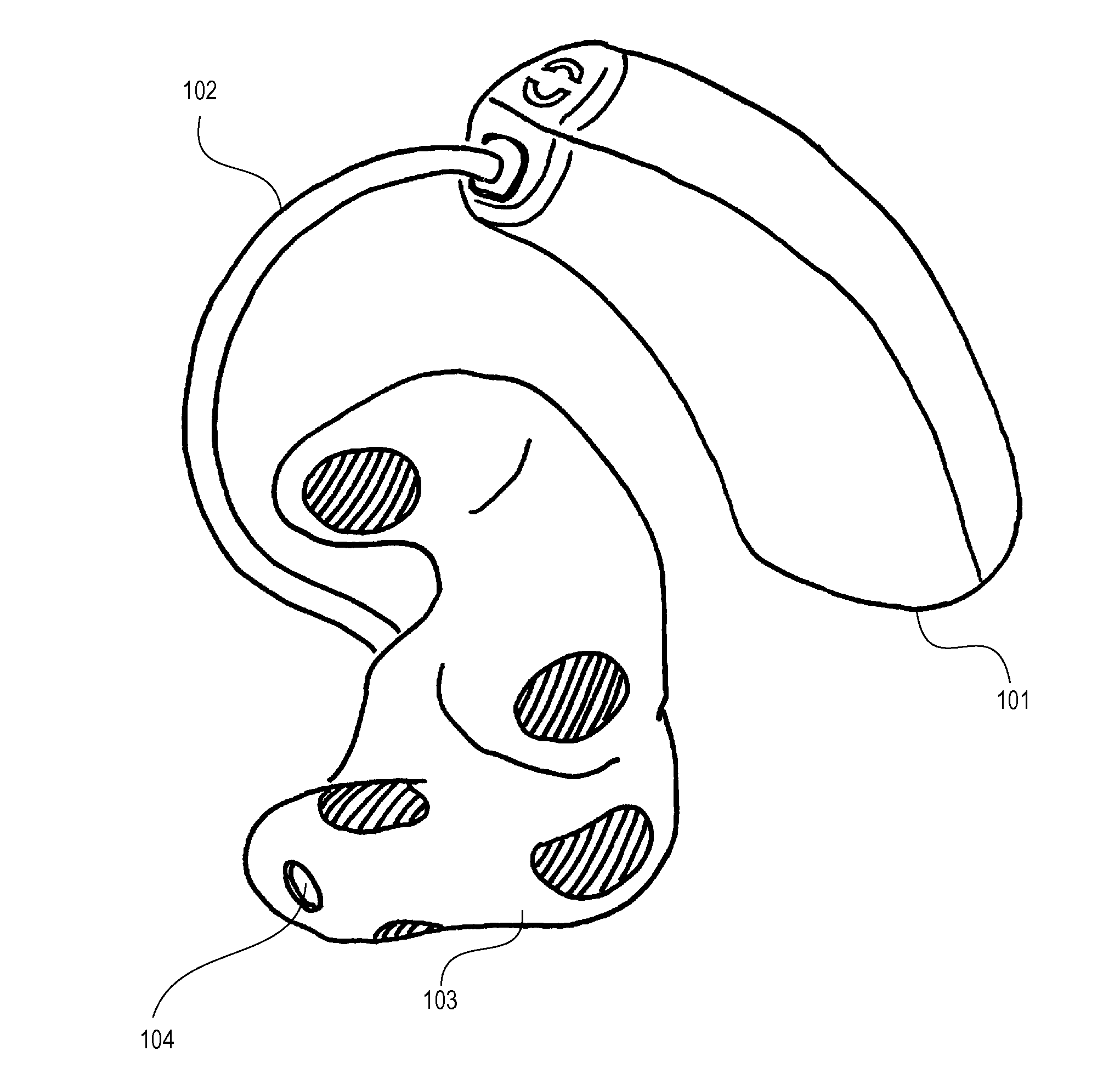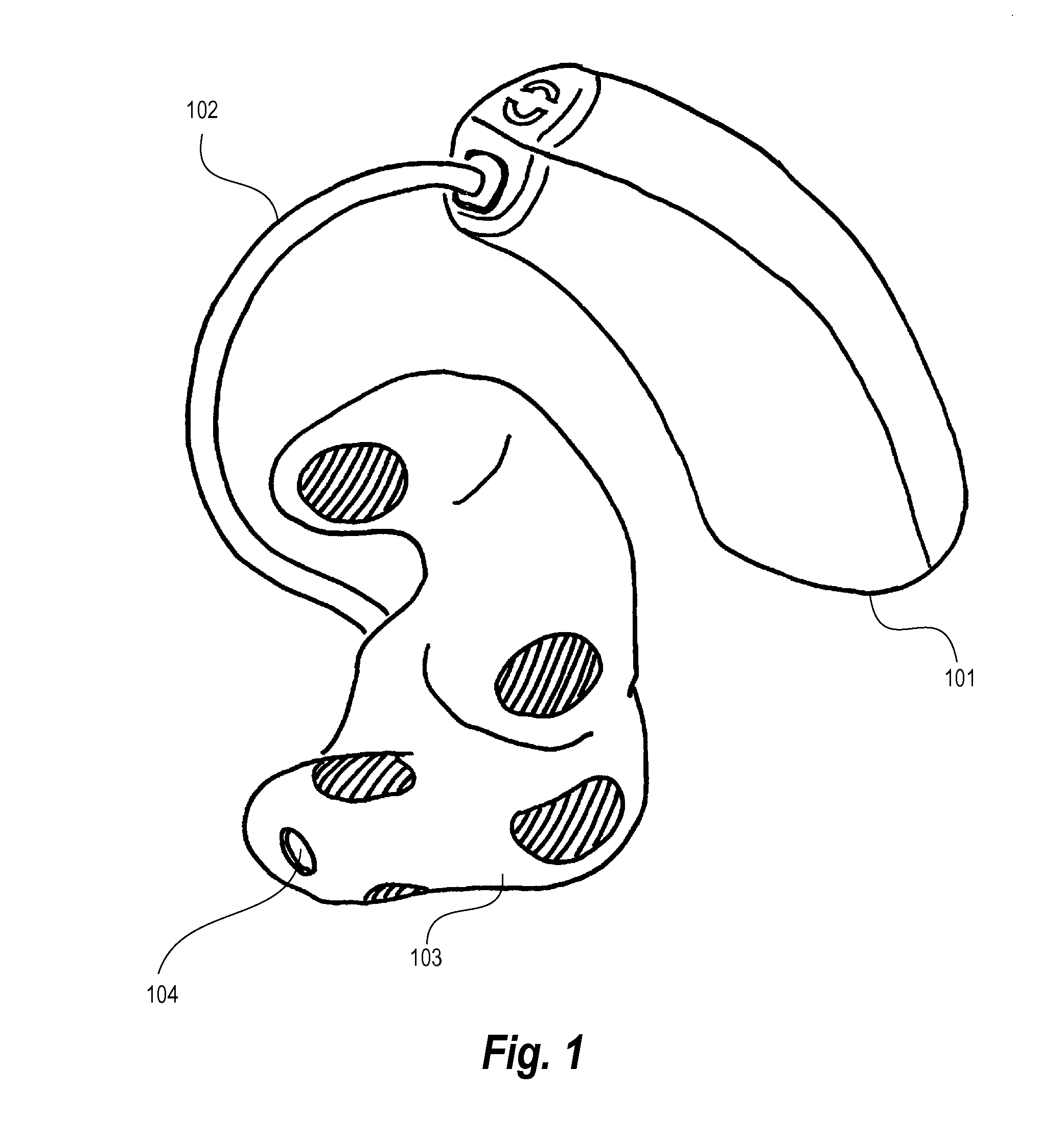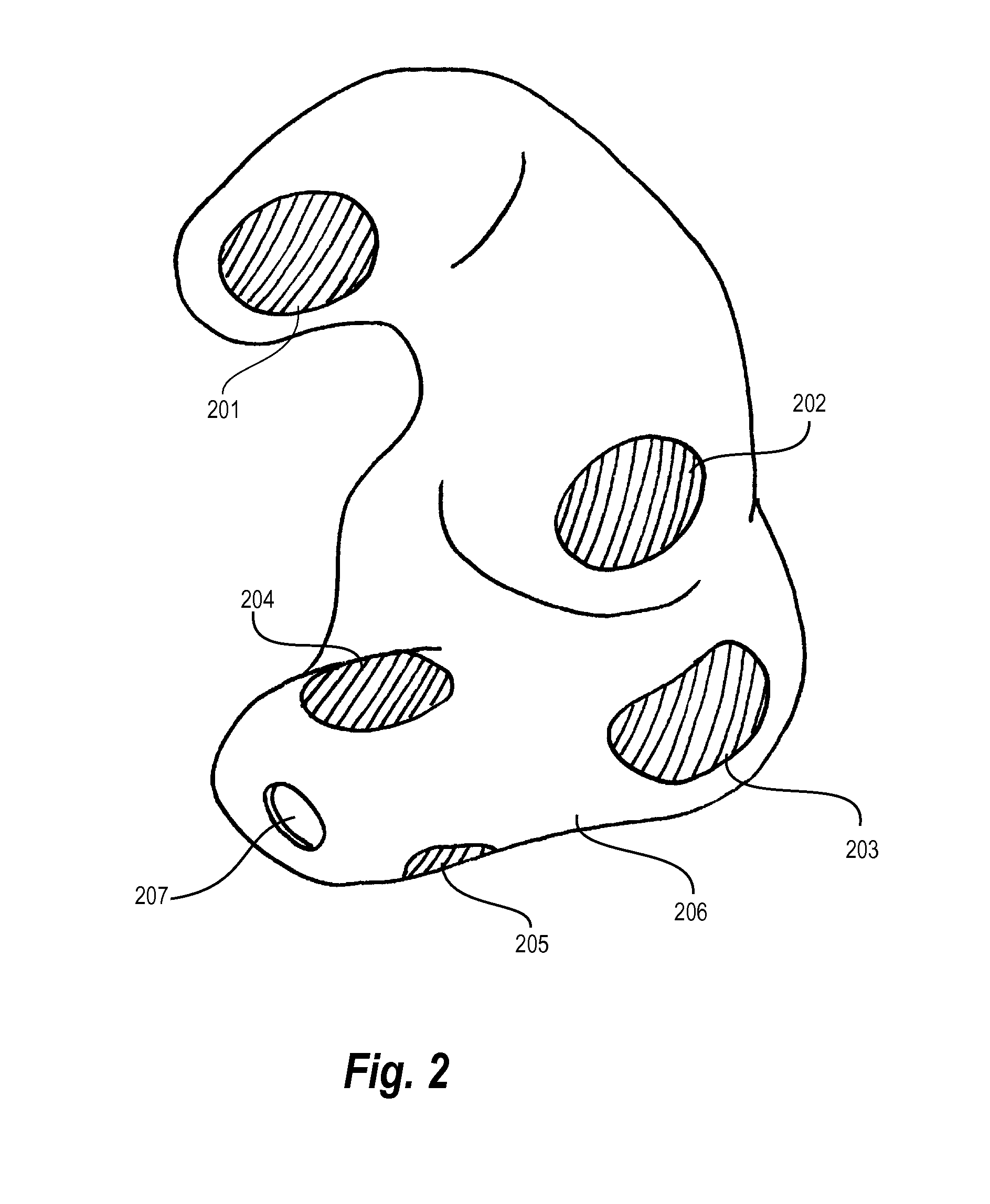Hearing aid adapted for detecting brain waves and a method for adapting such a hearing aid
- Summary
- Abstract
- Description
- Claims
- Application Information
AI Technical Summary
Benefits of technology
Problems solved by technology
Method used
Image
Examples
first embodiment
[0066]In FIG. 5 the principle of the feature extraction and feature classification process in a hearing aid system according to the invention is illustrated. The hearing aid system comprises a first, e.g. left, hearing aid illustrated above the dashed line in FIG. 5 and a second, e.g. right, hearing aid illustrated below the dashed line in FIG. 5. The first and second hearing aids are both hearing aids according to the invention and substantially as described above with reference to FIGS. 1 and 2. In the embodiment shown, in each of the left and right hearing aids, an analog front-end substantially as described above generates a left signal vector 501 and a right signal vector 506, respectively. In each of the left and right hearing aids the respective signal vector 501 and 506 is used as input for a feature extraction and classification process of the type described in connection with FIG. 4. Thus, the respective signal vectors 501 and 506 are used as input for a feature extraction...
second embodiment
[0068]The transmitting means may in principle form a connection between the hearing aids connecting other components than the above mentioned. For instance, and as illustrated in FIG. 6, featuring the process shown of FIG. 5, the interconnection may be provided between the classifying means 604 and 609, respectively, of the hearing aids, thus enabling exchange of feature vectors 603 and 608, respectively, between the hearing aids.
third embodiment
[0069]As illustrated in FIG. 7, featuring the process shown of FIG. 5, another possibility is to provide an interconnection for exchanging the output of the respective classification means 704 and 710, in FIG. 7 called subclass vectors 705 and 711. In this case, each hearing aid of the hearing aid system further comprises class combining means 706 and 712, respectively, for combining the subclass vectors 705 and 711, respectively, to form the final class vector 707 and 713, respectively.
[0070]Turning to FIG. 8 a flow diagram illustrating the complete signal obtaining and processing path in a hearing aid according to the invention is shown. The hearing aid comprises electrodes 801, 803, a reference electrode 805 and input transducers in the form of microphones 807 and 810 connected to and transmitting signals 802, 804, 806, 809 and 811, respectively, to the analog front-end 812. The output of the analog front-end 812, i.e. the signal vector 813, 821, is fed to the digital back-end 82...
PUM
 Login to View More
Login to View More Abstract
Description
Claims
Application Information
 Login to View More
Login to View More - R&D
- Intellectual Property
- Life Sciences
- Materials
- Tech Scout
- Unparalleled Data Quality
- Higher Quality Content
- 60% Fewer Hallucinations
Browse by: Latest US Patents, China's latest patents, Technical Efficacy Thesaurus, Application Domain, Technology Topic, Popular Technical Reports.
© 2025 PatSnap. All rights reserved.Legal|Privacy policy|Modern Slavery Act Transparency Statement|Sitemap|About US| Contact US: help@patsnap.com



